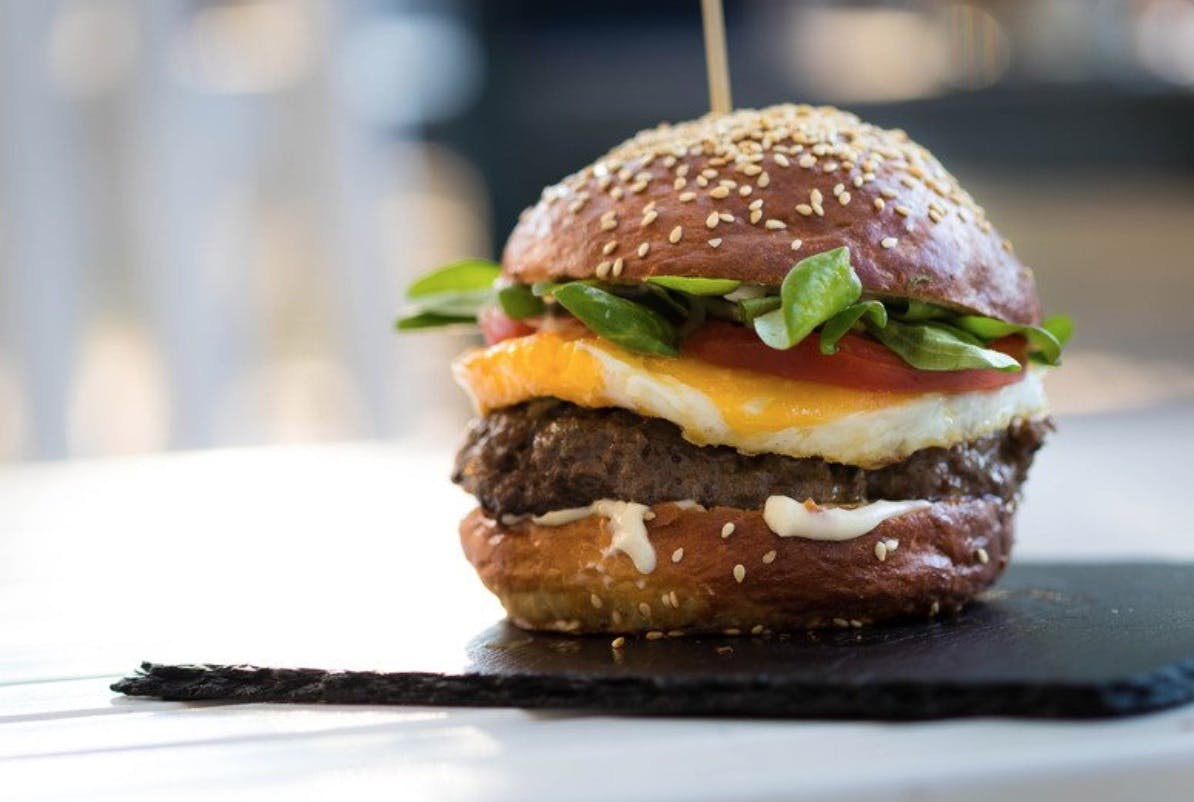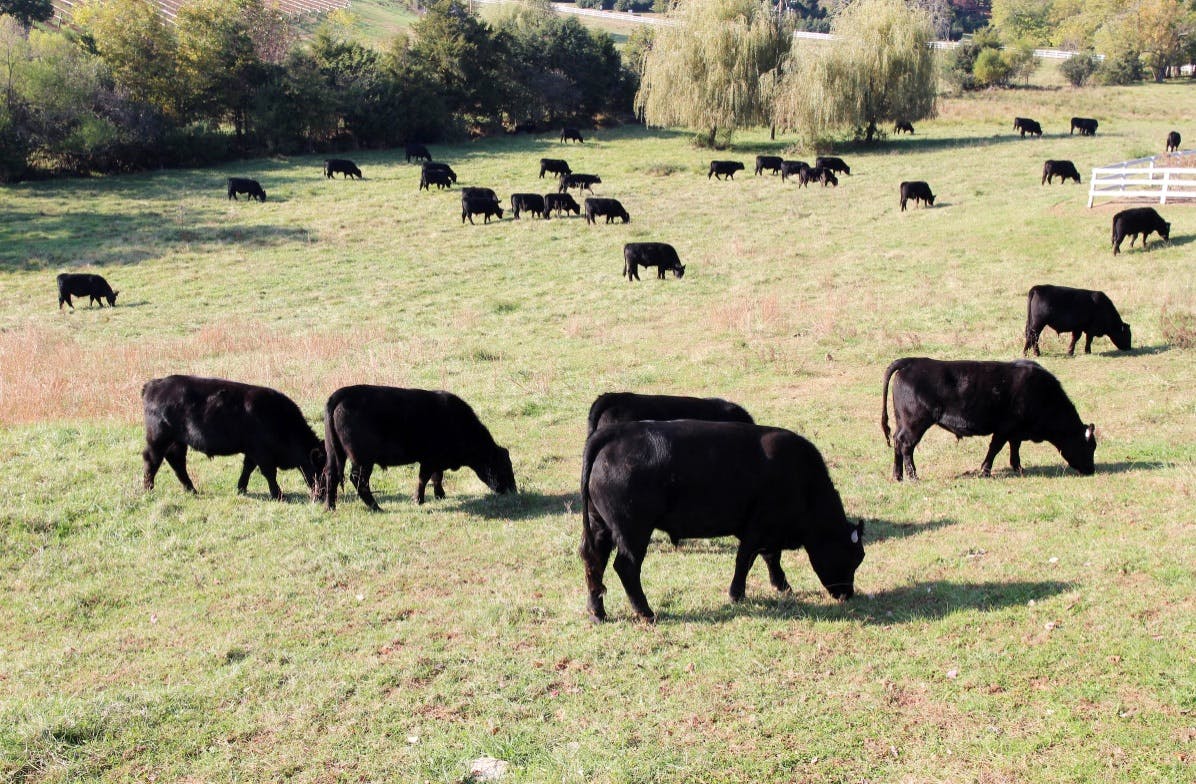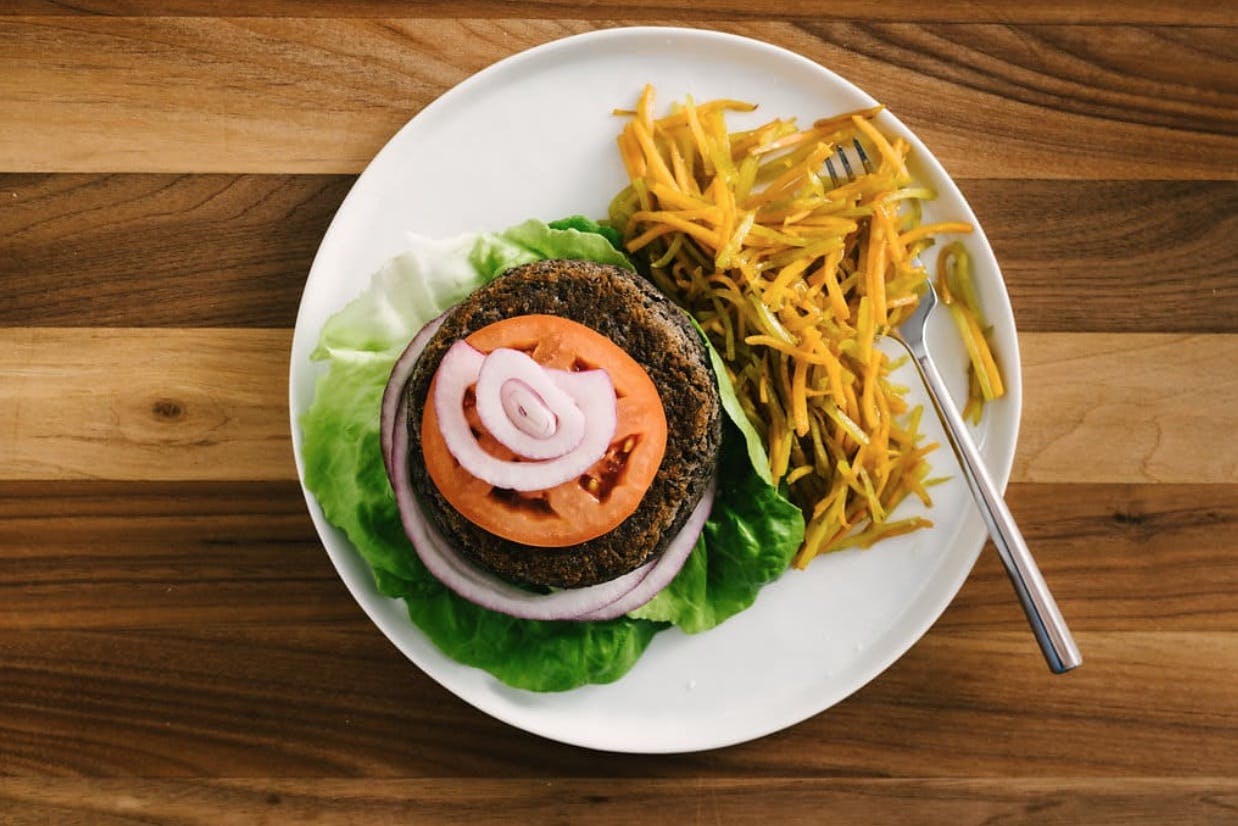
What's the Deal with Plant Based Meat?
By Danielle McAvoy
September 19, 2019
The first time I heard about the Impossible burger, it was only available in a couple high-end restaurants in NYC. It seemed niche, expensive, and honestly, weird. Do vegans really want to eat something that bleeds like beef? Do meat eaters really want to go to a nice restaurant and order the veggie burger?
Fast forward three years and my strictly meat-and-potatoes dad, who lives in a small town historically slow to adopt trends, texts our family thread: “you guys GOTTA GOTTA try the impossible whopper! It’s gonna save the world!!”
It made me think about its epic rise in popularity in such a short time and as a registered dietitian, whether that leaves me celebrating or shaking my head.
What exactly is an Impossible burger?
The Impossible burger is a plant-based patty that is engineered in a lab. The main ingredient is soy, though it’s not from soybeans that have grown out of the ground.
In real beef, the signature meaty flavor and bloody juiciness that people love comes from a compound called heme. All living creatures have heme, because it’s the molecule in blood that carries oxygen to our working muscles and tissues. While plants don’t have “blood,” they also rely on heme to transport oxygen to all of the plant cells.
In soy, heme is found in the roots, and it’s called leghemoglobin. The amount of leghemoglobin needed in each Impossible burger to make it look, feel and taste meaty is far more than we can get from digging up soy plants and extracting it from the roots.
Scientists instead found a way to create it in a lab. They took DNA out of the soy roots and inserted it into a yeast, so that the yeast is genetically modified to produce large amounts of leghemoglobin. That leghemoglobin is the magic ingredient that has made the Impossible burger revolutionary for meat-lovers.
But is it healthier than the real deal?
To answer that, let’s first breakdown its components:
- The protein is derived from another extract of the soy plant called soy protein isolate.
- The fatty sizzle comes from coconut oil and sunflower oil.
- The flavor comes from salt and sugar.
- It’s all held together by methylcellulose, a binder used in many processed foods.
The complete list of ingredients is:
Water, Soy Protein Concentrate, Coconut Oil, Sunflower Oil, Natural Flavors, 2 percent or less of: Potato Protein, Methylcellulose, Yeast Extract, Cultured Dextrose, Food Starch Modified, Soy Leghemoglobin, Salt, Soy Protein Isolate, Mixed Tocopherols (Vitamin E), Zinc Gluconate, Thiamine Hydrochloride (Vitamin B1 ), Sodium Ascorbate (Vitamin C), Niacin, Pyridoxine Hydrochloride (Vitamin B 6 ), Riboflavin (Vitamin B2 ), Vitamin B12.
As far as nutrition goes, the Impossible burger and the typical beef patty are similar, with a few key differences:
The advantages of the Impossible burger are its fiber content, and that it has less total fat. The downsides are that it has more saturated fat than beef due to the coconut oil, and a lot more sodium. And less protein, though I would still consider it a good protein source.
To say it is healthier would be a stretch.
Nutritionally, the Impossible burger is ultra-processed, and higher in sodium and saturated fat than a typical beef burger. Although the FDA has declared the genetically engineered ingredients in the Impossible burger as safe for consumption, there simply hasn’t been enough time for studies of its safety in humans.
On the flip side, it does have some significant advantages.
The Impossible burger is a good choice if it helps reduce the consumption of red meat, especially processed red meat from a fast food chain.
A diet high in red meat (more than 1-2 times per week) has been shown to increase the risk of high cholesterol and heart disease. The Impossible burger could be a good first step toward reducing overall meat consumption and gaining a better understanding and exposure to plant-based foods.
One thing to remember is that plant-based meats often tend to have a “health halo,” meaning because they are marketed to be healthy, people end up eating more than they should or compensating by eating less healthy throughout the day.
From an ecological perspective, the impossible burger is definitely a better choice.

Meat production from livestock is estimated to produce 10 to 40 times the amount of gas emissions as plants. Livestock also require an astronomical amount of land – currently the largest use of land on Earth and 80% of total farmland. In addition to land, the amount of grain and water used to feed livestock is also simply not sustainable.
Replacing beef with the Impossible burger could have a significant positive impact on global resources and the health of our future environment.
Put Beyond and Impossible in a ring together. Who wins?
The Impossible burger doesn’t have a corner on the plant-based burger market, with Beyond Meat also showing up on fast food menus everywhere.
The Beyond burger is very similar in nutrition to the Impossible burger, but it is made without soy or genetically modified organisms. The protein in the Beyond burger comes from peas, rice and mung beans. Just like Impossible, the Beyond burger has coconut oil and methylcellulose for sizzle and binding. The red color in Beyond burger comes from beet juice instead of heme. Like Impossible, it is highly processed, but a good choice if it reduces red meat consumption.
Given the equally processed level between the two, I’d say the fight ends in a tie.
In a dietitian’s dream, people would choose real, whole plant foods instead of red meat. But in the real world, these plant-based burgers are certainly a good start.
Will Territory be putting it on the menu?
At Territory, we’re committed to whole, minimally processed, and nutrient-dense foods, so we don’t see the Impossible or Beyond burger on our menu in the near future. We will continue to focus on minimally processed, wholesome plant-based proteins such as homemade bean or chickpea burgers and tempeh.

Popular Posts
Foods to Avoid When Taking GLP-1 Weight Loss Medications
April 25, 2025
Tips for GLP-1 Success: Healthy Habits to Practice on Weight Loss Medication
March 6, 2025
How to Go Gluten-Free: A Beginners Guide to Starting a Gluten-Free Diet
November 21, 2024
A Guide to Snacking on a Gluten-Free Diet
November 12, 2024